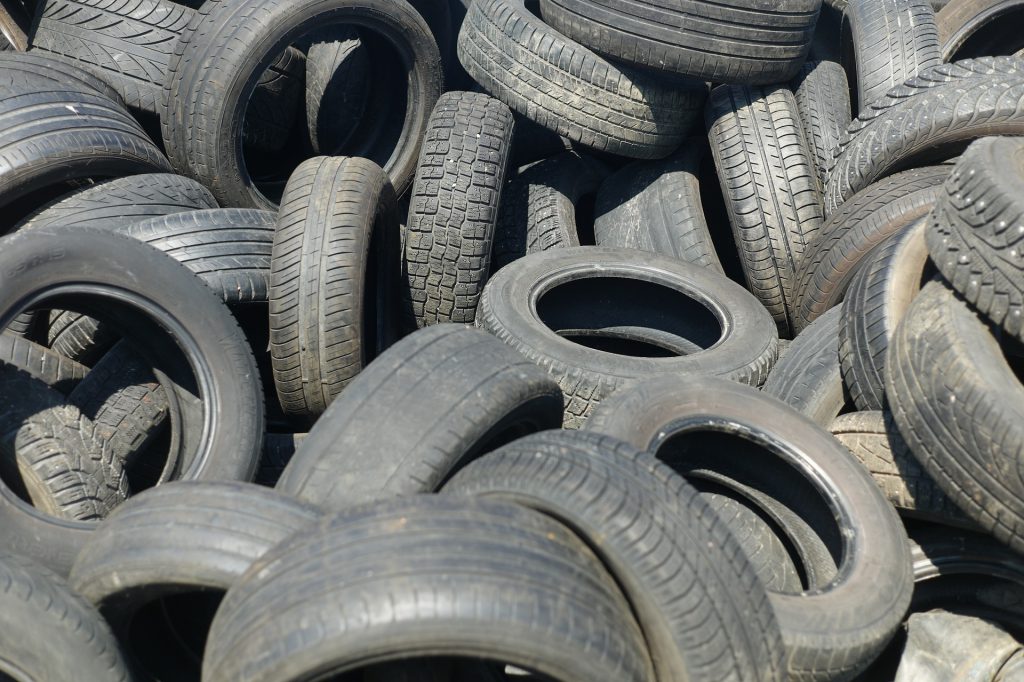17/07/2019
A new material has been developed to manufacture insulating material for footwear by reusing tyres
Researchers from the Department of Mechanical Engineering of the URV, jointly with researchers from the UPC, have found a way to reuse the rubber from tyres that are no longer in use, which will save the footwear industry 20 million euros per year in raw material and reduce CO2 emissions by 40,000 tonnes

Researchers from the Department of Mechanical Engineering of the URV, jointly with researchers from the UPC, have found a way to reuse the rubber from tyres that are no longer in use, which will save the footwear industry 20 million euros per year in raw material and reduce CO2 emissions by 40,000 tonnes
It has been calculated that around 300,000 tonnes of tyres fall into disuse in Spain every year and 2,000,000 tonnes in Europe, a third of which end up in illegal dumps. As waste material, it is difficult to treat and can take 1,000 years to disappear naturally. The enormous volume of unused tyres has meant that recently new formulas have been sought to give them a new lease of life. Products to make pavements, material for public works or surfaces in children’s playgrounds are some of the ways that have been found to reduce the number of tyres in dumps, but the vast majority end up in energy recovery plants where the waste is burned and the resulting energy used to produce steam and electricity. Now a URV research team, in conjunction with researchers from the Universitat Politècnica de Catalunya · BarcelonaTech (UPC), have found a new application for the vulcanized rubber from tyres, which can be converted into insulating material for footwear through a simple process that involves combining it with a polymer.
The research team, led at the URV by Marc Marín Genescà, from the Department of Mechanical Engineering, developed this material after combining the vulcanized rubber from tyres with low proportions of polymers. During the research, which has been published in the journal Applied Sciences, the researchers carried out tests with various polymers in different concentrations until they found the ideal combination that enabled them to develop an insulating material for footwear that had the required criteria conductivity, elasticity and resistance to fracture for their purpose.

“By adding 10% of polymers to the vulcanized rubber we have been able to create this new product, which gives best results when the polymer used is ethylene/vinyl acetate, used to make EVA rubber,” says Marc Marín.
As well as Marc Marín Genescà, who teaches at the School of Chemical Engineering (ETSEQ), the other members of the team at the URV are Jordi García Amorós and Lluís Massagués Vidal, researchers from the Department of Electrical Engineering and lecturers School of Engineering (ETSE).
The research at the UPC was directed by Ramon Mujal Rosas, from the Department of Electrical Engineering, with the support of Xavier Salueña Berna, from the Department of Mechanical Engineering, both lecturers at the Terrassa School of Industrial, Aerospace and Audiovisual Engineering (ESEIAAT).
A sustainable solution
In their research, the researchers have also borne in mind the sustainability and economic viability of the product. “Using it will save companies money in the production process because they will use a smaller percentage of raw material, which will be substituted by the vulcanized rubber from the dumps,” adds Marín.
According to the research results, and using data on the volume of footwear production on a global scale, Marín states that “If the producers of footwear in the world replace the material they use now with ground tyre waste – something that is already being done in the energy recovery plants – and added 10% of EVA rubber, they could save about 20 million euros every year in the cost of raw materials and reduce CO2 emissions by about 40,000 tonnes.” URV and UPC researchers are now working to find new applications of the same technique and they have already had some promising results with applications such as coatings and trays for cables.
Bibliographic reference: Marc Marín Genescà, Jordi García Amorós, Ramon Mujal Rosas, Xavier Salueña Berna, Lluís Massagués Vidal. ‘Comparison of mechanical and electrical characteristics of various polymers blended with ground tire rubber (GTR) and applications.’ Applied Sciences. DOI: 10.3390/app9081564
